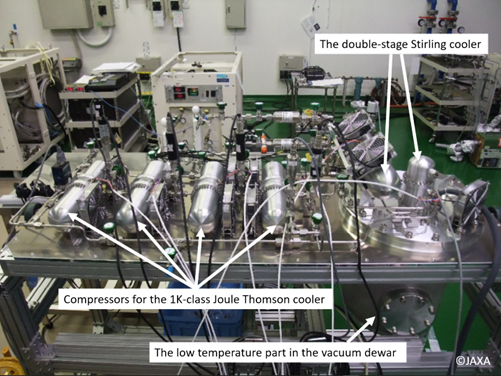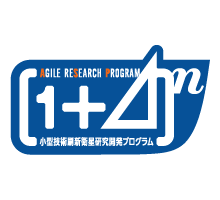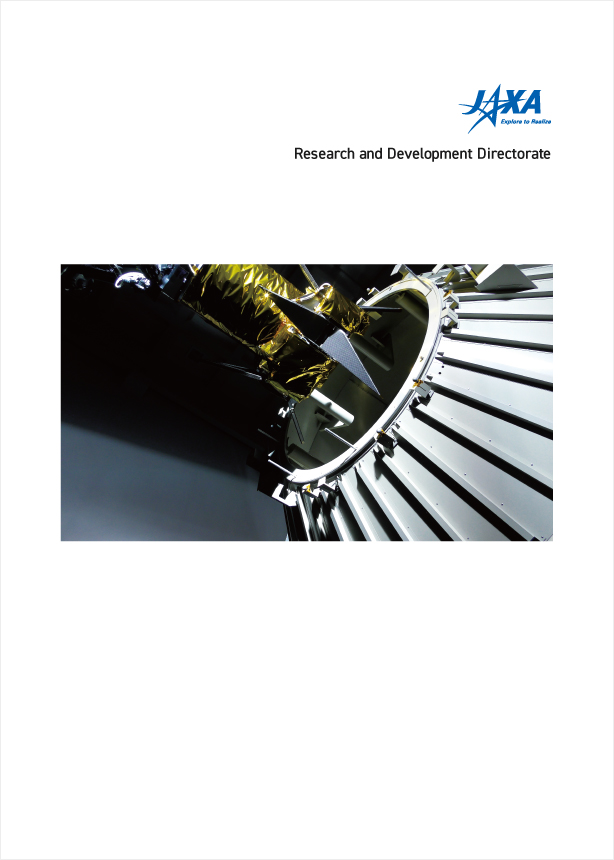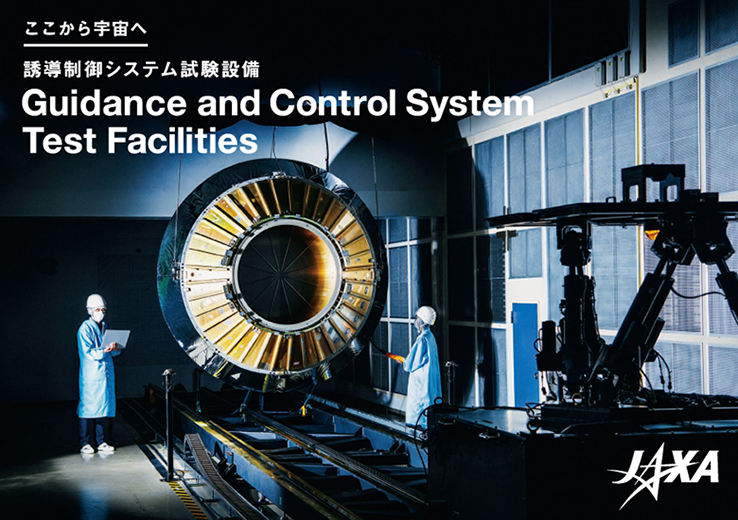Outline of the Research
Highly sensitive instruments used for Earth observation and astronomical observations from space need to reduce thermal noise in their signals to capture weak electromagnetic waves with high accuracy.
Cooling system technology is becoming indispensable to realizing high-sensitivity instruments. Earth observation satellites need to be cooled to liquid nitrogen temperatures (about -196°C), and astronomical observation satellites need to be cooled to near absolute zero (about -273°C).
However, since cooling with refrigerant imposes significant limitations in design and on-orbit lifetime, R&D of a cryogen-free mechanical cooler with longer service life and higher reliability is needed. Specifically, we are developing a two-stage Stirling cooler that produces 20 K and a Joule-Thomson cooler that produces 4.5 K and 1.7 K.

One of the most important evaluation tests for mechanical coolers is the lifetime evaluation test. This test evaluates the effects of mechanical wear on the aging of cooling performance and the contamination of a working gas (helium) by impure gases. In this study, we examine each mechanical cooler under development by continuous operation over actual time.
In addition, future missions will require an even longer service life than the current three to five years. For this reason, we are researching to extend the service life, including designs to reduce mechanical wear and impure gases and improve the efficiency of lifetime tests through acceleration evaluation.
* 0K = -273.15°C
Publications
- Y.sato, K.Tanaka, H.Sugita, K.Shinozaki, K.Sawada, N.Y.Yamasaki, T.Nakagawa, K.Mitsuda, S.Tsunematsu, K.Ootsuka, K.Kanao and K.Narasaki, “Lifetime test of the 4K Joule-Thomson cryocooler”, Cryogenics 116 (2021) 103306.
- K.Shinozaki, Y.Sato, K.Sawada, H.Sugita, T.Nakagawa, C.Tokoku, N.Y.Yamasaki, K.Mitsuda, S.Tsunematsu, K.Kanao, T.Prouve, J.M.Duval, I.Charles: “Cooling capability of JT coolers during the cool-down phase for space science missions”, Cryogenics 109 (2020) 103094.
- 佐藤洋一、篠崎慶亮、杉田寛之: 高感度観測ミッションに必要な機械式冷凍機の研究開発, 日本航空宇宙学会誌, 65(8), pp.244-249, 2017.
- 篠崎慶亮: 極低温冷却ミッションに必要な冷却技術, 日本航空宇宙学会誌, 65(6), pp.164-170, 2017.
- Y. Sato, K. Shinozaki, K. Sawada, H. Sugita, K. Mitsuda, N. Y. Yamasaki, T. Nakagawa, S. Tsunematsu, K. Otsuka, K. Kanao, S. Yoshida and K. Narasaki: “Outgas analysis of mechanical cryocoolers for long lifetime”, Cryogenics 88 (2017) p70-77.
- 篠崎慶亮, 澤田健一郎, 佐藤洋一, 田中洸輔, 杉田寛之, 満田和久, 中川貴雄: クローズドサイクル希釈冷凍機の圧縮機開発および希釈冷凍機システム評価試験, 宇宙航空研究開発機構研究開発資料, JAXA-RM-16-007, 2017.
- K. Narasaki, S. Tsunematsu, K. Otsuka, K. Kanao, A. Okabayashi, S. Yoshida, H. Sugita, Y. Sato, K. Mitsuda, T. Nakagawa, T. Nishibori: “Lifetime Test and Heritage On-Orbit of SHI Coolers for Space use”, Cryocoolers 19 (2016) pp.613-622.
- Y. Sato, K. Sawada, K. Shinozaki, H. Sugita, K. Mitsuda, N.Y. Yamasaki, T. Nakagawa, S. Tsunematsu, K. Ootsuka, K. Narasaki, “Development of 1K-class Joule-Thomson cryocooler for next-generation astronomical mission”, Cryogenics, V74 (2016) pp.47-54.








